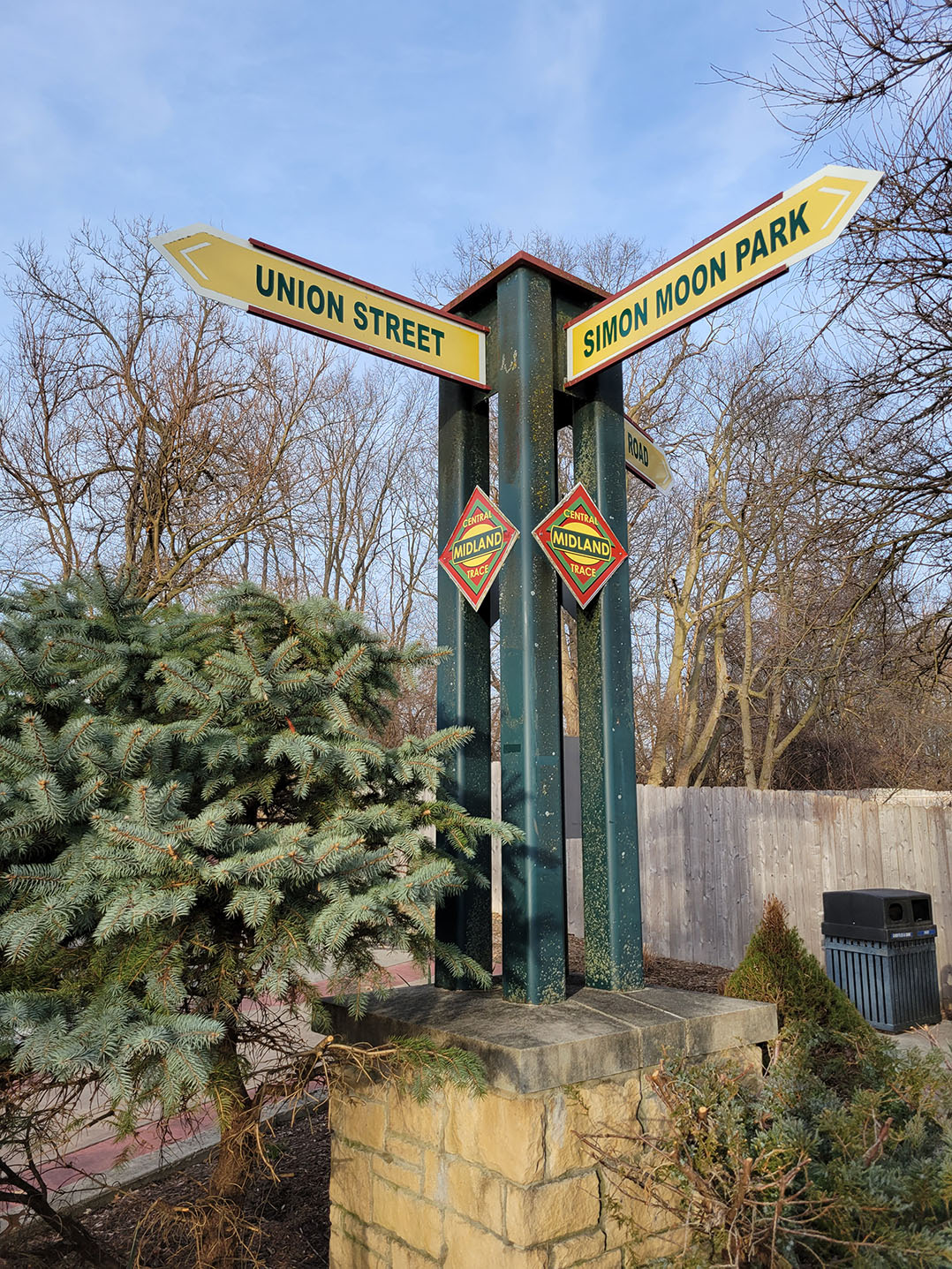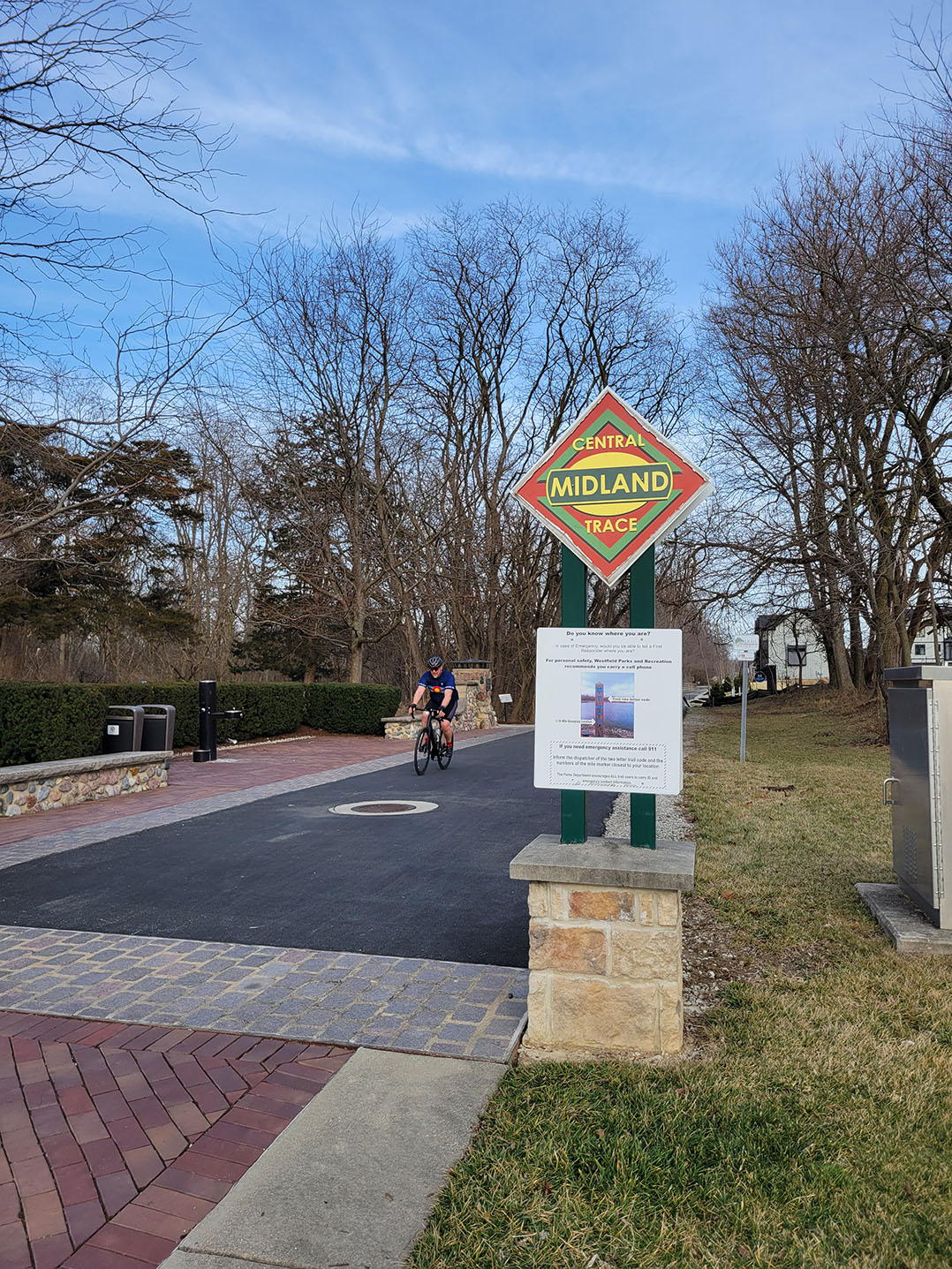When people think of Westfield, waterfront property doesn’t usually come to mind.
But Mayor Scott Willis and his administration plan to look at development along one of the city’s recreation gems – the Monon and Midland Trace trail systems – the way one might think of developing a river district.
City staff is in the process of working on development plans that will tie into those trails, highlighting them as the frontage of potential commercial and retail development. The intersection of the two trails east of Oak Ridge Road and south of Ind. 32 provides a walkable link from all points into downtown, where the Midland Trace passes through Grand Junction Plaza.
Jenell Fairman, director of economic development for the city of Westfield, said trail-oriented development plans will treat the trails as “beachfront property” by strategically maximizing the trail with amenities, encouraging developers to incorporate trail facing amenities such as plazas, playground and art installations, retaining natural areas, and collaborating with the public works and parks departments to create trail connectivity to other trails and neighborhoods.

Fairman noted that there is already a model for that growth in Carmel, where newer development and activity are focused on the Monon Greenway. For example, Midtown Plaza and Carter Green are open spaces that were built to front the Monon Greenway, and patio space at the Palladium and Hotel Carmichael also faces the trail.
“All of these things are trial focused because that is where the action happens in our county. That is where the action is happening with people walking,” Fairman said. “We don’t have a people-oriented development (in Westfield) in our history. When you look at an old city, those cities grew with downtown grids, where you can work in an office, and you walk two blocks away and there are five different choices of restaurants to go to. Here, everything was built on the car, people get in their cars to drive places. The trails are where people will actually get out on foot and walk from place to place.”
Fairman said the city is working with developers to capitalize on the trail system, to think of the trials as their front doors rather than their backyards. For example, a development with a rear parking lot could place that lot on the street side of the property, leaving the portion of the property facing the trails as the new front door.
“We have an advantage in Westfield in knowing what has happened to the other Hamilton County cities, and how growth has continued to flourish over the last 15 to 20 years,” Fairman said. “Westfield has been very slow to invest in that public-private partnership that is required to make it truly thriving as a commercial hub. But Westfield is the sixth-fastest growing city in the U.S. Westfield is about at the same stage in growth that Carmel was 15 or 20 years ago. So, we have seen what that pattern of growth looks like immediately to our south and we’ve seen it be very successful from a financial standpoint. We have a really great model to follow, from Carmel and Fishers and Noblesville. We’re following all the same rules, we’re in the same county, so we have the same opportunities for investments, state grants, and the same TIF opportunities. All of our rules are equal.
“If we can take those lessons learned and we can see what has been successful in the other communities and we can apply those best practices to Westfield, then we can plan strategically for growth.”





